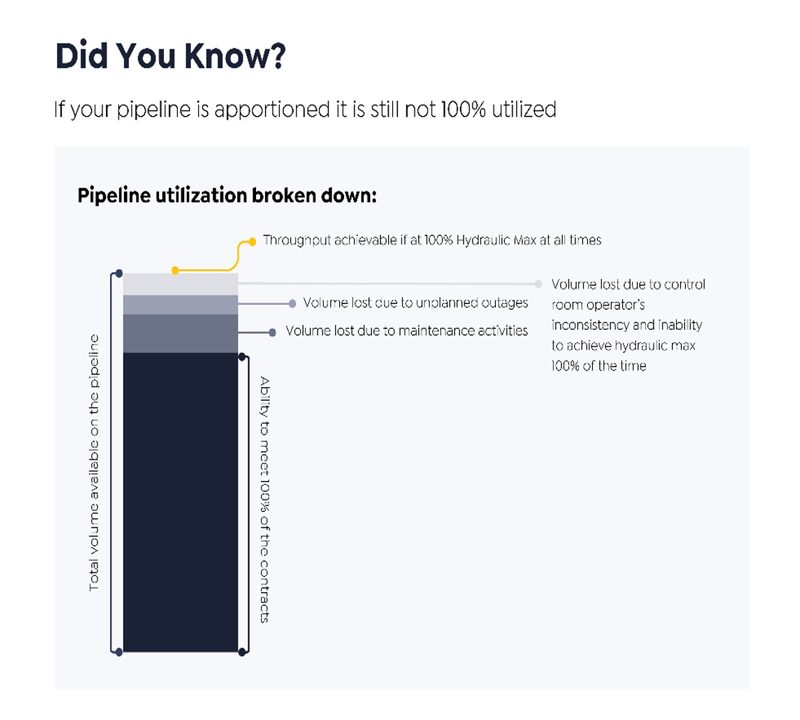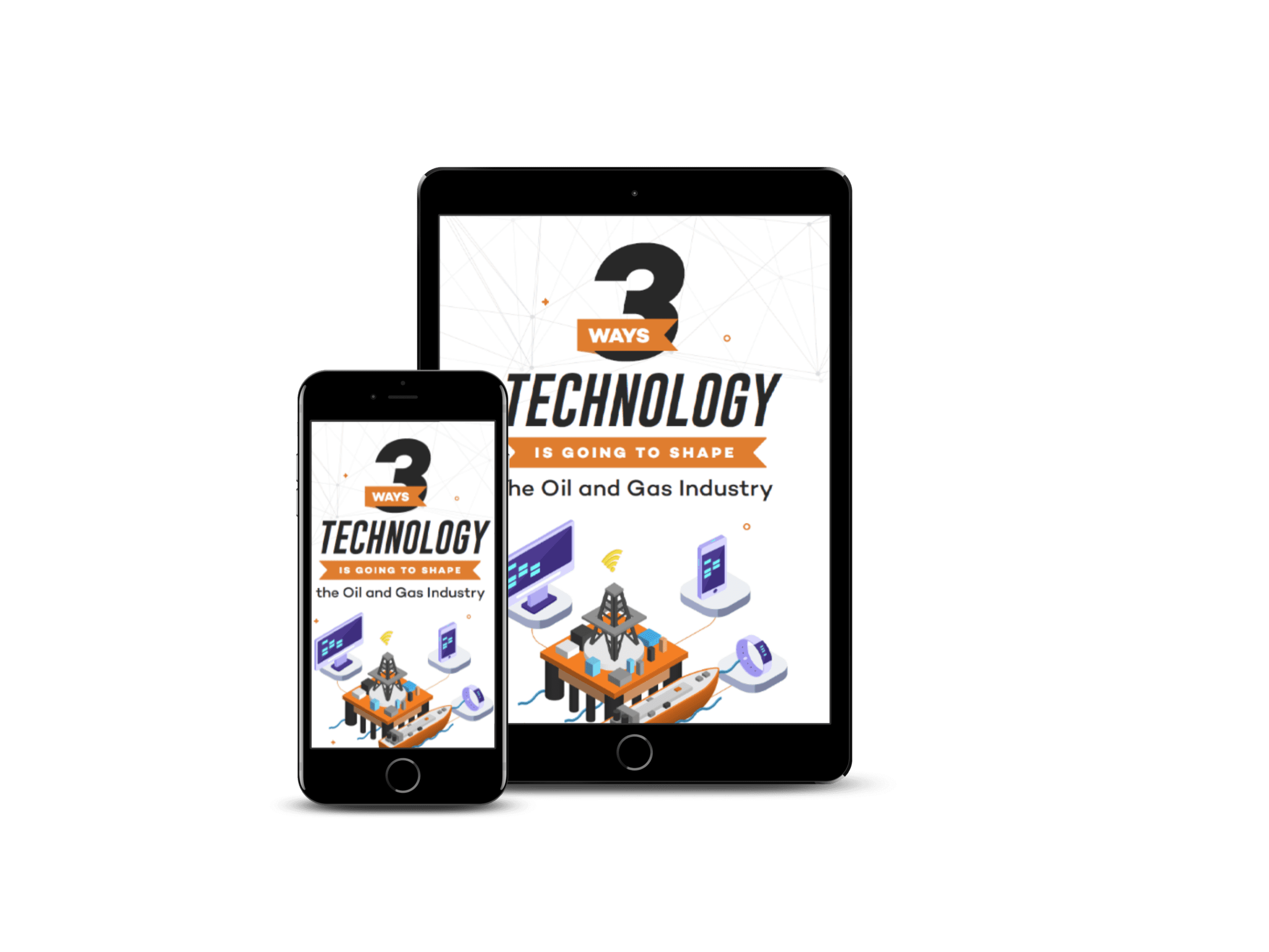Let’s discuss de-bottlenecking in each segment of our industry down to each operational unit within each segment. For instance, we might target bottlenecks in a refinery and then zoom in on specific units like a distillation column in the refinery. However, if the next unit in the process flow lacks the capacity to handle additional volume (and there is no optimization that will enable it), then we must admit to ourselves that this was a failed pursuit. While there will be many failed pursuits, the effort remains worthwhile due to the valuable knowledge gained. The real return on investment (ROI) emerges when we can address bottlenecks on a larger scale. This raises the question: If we lose sight of the broader perspective, are we truly achieving significant progress?
An optimization at the wellhead might push more product but, if the pipeline doesn’t have the capacity, then it doesn’t contribute to enhancing the efficiency of our energy infrastructure. In an era of declining investment in energy infrastructure, it becomes necessary for us to zoom out and look at the big picture for supply chain efficiency. Focusing solely on localized efficiency, without a positive impact on the entire energy system may lead to resource wastage without real returns.
I aim to address the earlier question by drawing analogies from other industries with consumer products that we can easily relate to. Following that, I will delve into what I consider the “low-hanging fruit” for the entire energy industry: pipelines.
Zooming all the way out, the energy industry is a production and logistics system to deliver joules of energy to consumers. When viewed in that way, many similarities with large department stores or even the entertainment industry become apparent. Just as a department store sources products desired by consumers and ensures all locations are adequately stocked, we manage batches of petroleum products before and after refinement. Unlike large department stores that typically have an inventory management system for their entire supply chain, a similar approach is generally lacking in the energy sector. While some companies may have such systems within a specific silo of the total energy supply chain (such as within a refinery), a comprehensive inventory management system for the energy supply chain as a whole is generally absent.
Humans often struggle to grasp the “point,” as elaborated in one of my most recent favorite books, Antifragile by Nassim Nicholas Taleb. We are great at seeing what is in front of us, but zooming out to easily comprehend the big picture isn’t something that we seem to be great at as a species.
Given the vastness of the energy industry, historical difficulties in optimizing and establishing transparency along the energy supply chain have persisted into today. Further exacerbated by human process interactions between industry silos (upstream, midstream, downstream) and by the operational silos in our organizations (engineering, operations, procurement, etc.). Such complexities introduce latency into decision-making, resulting in unnecessary inefficiencies and extra costs in delivering energy to consumers. I also call this human process latency.
Some will say the lack of investment into the oil and gas sector of the energy industry is becoming existential. If this is the case, efficiency is the only path forward. While the technology capabilities to eliminate latency from human decision-making processes exist, as seen in the other industries I mentioned, we lag due to the magnitude of the industry. Even if some people do not acknowledge that the reduced investment in oil and gas is negatively affecting the affordability of energy for consumers, it doesn’t negate the potential for massive improvements.
Now, onto what I consider as low hanging fruit to de-bottleneck our energy supply chain – the midstream sector, specifically pipelines. This sector connects production to refining and refining to consumers. Any additional capacity on pipelines (given advantageous geographic locations, refining capacity, etc.) can enhance refining production and supply to consumers. In theory, eliminating bottlenecks within the existing infrastructure between key value-added points (such as separation near the wellhead and refining) could have a high impact score with respect to de-bottlenecking overall systems. With that low hanging optimization fruit taken, those individual optimizations at the refinery unity level now have massive impact.
Now that we have established the importance of the middle infrastructure of our energy systems, let’s zoom in into specific segments, such as achieving maximum flow rates on a batched liquid pipeline. It is a more complex process than many might realize.
Anyone who has sat at a liquid pipeline control room operations console knows that you’re always chasing the actual hydraulic maximum of the system. You have your target rate set by oil schedule and approved by engineering but what you see as a control room operator is that at certain times, with certain batches at certain locations, you can get more flow rate within existing safety constraints and with no risk to upsets. As a control room operator, you feel like you are always behind the ball, or that the guidance you are getting is not quite right since it never comes in real time.
In other words, by the time you are aware that a change is needed in max rates, the opportunity is already gone as that snapshot of that batch configuration and hydraulic profile (a function of the max/min allowable pressures, elevation profile, liquid characteristics like density, viscosity, etc.). So, you are left operating by “feel” or heuristics. But then the phone rings, distractions set in, and the chance to capture that value for the organization is lost, because you cannot execute on your heuristics.
Historically, a solution to this challenge has involved recommendation systems. Yet they are just a beefed-up version of the current process that is facilitated via Steady State simulations, emails, phone calls, and pipeline scheduling software. They ultimately increase the control room operator burden.
Some liquid pipeline companies call the differences in control room operator execution of operations the “natural reduction factor” or NRF. It’s simply a term to describe, “We did the simulations and set the plan, we aren’t sure why we can’t get that max flow rate all of the time, must be differences in control room operators’ skills,” etc.
Below is a visual representation of pipeline capacity and that NRF piece that just doesn’t seem to exist in real life:


Many of you reading this are working at organizations that have refineries, so you are very familiar with the success and revenue boosts brought by advanced process control. I propose extending that uplift through software to the pipeline sector to capture that elusive NRF – or as much of it as possible – to de-bottleneck the energy supply chain.
Here are some questions you can ask within your organization, followed by a brief exercise to determine whether your pipelines possess capacity that could significantly enhance the efficiency of the energy supply chain:
Is your pipeline apportioned?
When advanced process control (APC) was implemented in the refineries within your organization or in organizations you are familiar with, or by searching for effectiveness online, what was the percentage of additional volume/production?
Take this percentage and calculate what the additional barrels per day (bpd) are on your apportioned pipelines.
Multiply the bpd by your tolls for your typical products (or a simplified average) to get a feel for these numbers.
Does your pipeline have multiple pump stations and/or multiple products that control room operators are managing at once?
Do you own the product? If yes, add this to your calculation.
Do you own the refinery? If yes, what is the value of the additional refined products available (assuming there is capacity on the refinery)?
If your organization doesn’t own the refinery or the product, the dollar value may be lower for your specific company. However, the additional capacity can be a significant benefit for your customers, contributing to their bottom lines. As is the case with any effective organization, it is our duty to ensure we are consistently creating value for our customers.
From the perspective of managers, directors and VPs, a common refrain I often hear is that the engineering team asserts, “We already have these capabilities, and there is no additional value available.” To navigate through this and truly understand the potential capacity that may exist, here are some additional steps to consider:
Ask whether team members are familiar with advanced process control and if they have encountered its implementation on pipeline systems in the past.
If the answer is “no,” there is a clear opportunity to enhance volumetric throughput, leading to increased revenue for your organization and, consequently, your customers.
If the answer is “no,” but the capability can be developed in-house, consider the time value of money. Developing such solutions internally is a prolonged process, incurring additional costs and timeline. While building internally might be justified if there are no existing solutions on the market, in this case, there are. Why reinvent the wheel in a continual cost constraints environment?
When it comes to build versus buy this capability, I can assure you that, internally, the total cost would likely be five to 10 times higher than purchasing an already commercially proven solution. Additionally, the ability to see measurable results in six to 12 months is not possible.
Obtaining measurable results as quickly as possible when it comes to increasing volumetric throughput (de-bottlenecking our energy supply chain) is critical to prove return on the investment of purchasing software. The ability to measure the additional volumetric throughput is essential for our commercial teams, as it enables them to sell the increased volume to customers, thereby enabling the realization of ROI.
If the response indicates that “our pumps are running at 100 percent all of the time,” the follow-up question should be, “What are the batch line-ups for the simulations versus the historical operational data?” That will help all parties understand the actual dynamic operation of the pipeline.
The liquid pipelines business is simultaneously complex and simple. The physical composition of batches of product, combined with the elevation profile, results in a continuous real time, time series dynamic system, which means that steady-state operation is never truly steady-state. Control room operators manage these complexities every minute of every day. It’s within these operational complexities that the opportunity lies for us to make a positive impact on the journey to energy security, reduce emissions per barrel, and de-bottleneck through the implementation of advanced control systems for pipeline systems.
Vicki Knott is CEO of CruxOCM. She was featured in the July/Aug 2021 issue of Oilwoman Magazine in the article “From Human Error to AI Perfection: Making Robotic Operating Rooms the Standard” by Shannon West.
Oil and gas operations are commonly found in remote locations far from company headquarters. Now, it's possible to monitor pump operations, collate and analyze seismic data, and track employees around the world from almost anywhere. Whether employees are in the office or in the field, the internet and related applications enable a greater multidirectional flow of information – and control – than ever before.




